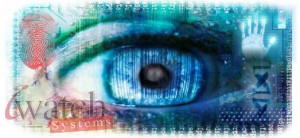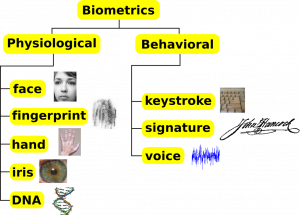BIOMETRIC ACCESS CONTROL SYSTEMS
The science of measurement and analysis of biological data is known as biometrics. The biological data mainly refers to certain unique characteristics of the human body. These characteristics include fingerprints, eye retinas and irises, DNA, facial patterns, voice patterns, hand measurements etc. They serve as excellent parameters for biometrics due to the fact that they are generally not the same for two different individuals and thereby help in the process of identification, verification, authentication and access control.
Biometrics has found application in every walk of life today. In everyday life it is mostly used as a measure of access control, known as biometric access control, which is used as part of biometric security to restrict access to specific regions as well as to safeguard valuables.
Authentication is the key feature which is generally used in each and every Biometric Device. There are two main types of Authentication: Physiological and Behavioral.
An access control system can be set up based upon any of the bodily characteristics discussed earlier. But over the years fingerprints have emerged as the preferred parameter for biometric access control. Fingerprints are mostly preferred over other parameters because of the fact that fingerprints are extremely unique. By scientific definition, fingerprints are the impressions left by the ridges present in our fingertips and palms. These ridges are of different patterns and the patterns vary not only from person to person but also from finger to finger i.e. the fingerprints from two different fingers of the same individual are also different. This highly unique nature of fingerprints has led to the immense popularity of fingerprint access control.
iWatchsystems is offering unique devices for Biometric Fingerprint Access Control Devices:
(1). MP-4300 Fingerprint Screening Unit.
(2). MP-4800 Biometric Universal Controller.
(3). MP-4800 Biometric Controller w/Prox Reader.
(4). MS-3000 Fingerprint Scanner for Enrollment.
For better understanding please visit our website:
http://www.iwatchsystems.com/products/category/biometric_fingerprint_devices-3.html
Today, most commercial organizations –from corporate offices to hospitals, from research labs to clubs—which feel the need to restrict access in their premises have embraced fingerprint access control. At times such access control systems are also used to record employee attendance. The most common implementation of such access control is a fingerprint door lock system. Such systems usually use a combination of a fingerprint scan and a pre-assigned unique number to determine whether or not to allow access. To eliminate chances of rejection of a scan as a result of injury inflicted to one hand, scans of fingers from both hands are recorded. Entry is allowed or rejected on the basis of acceptance or rejection of both the scan and the number. Also, to rule out chances of fingerprint hacking, some new-age door lock systems avoid directly matching a scan with a pre-stored one. Instead, the scan is converted to a binary code which is then matched with a previously encrypted code. This makes the access control system even more foolproof.
Why Biometrics:
Needless to say, the advantages of biometric access control systems over their manual counterparts are many. Firstly, any possibility of manual error is eliminated. Moreover, scanning processes usually take less than a minute and this saves valuable time for both authorities and the entrants. Finally, use of biometric access control reduces paper or plastic usage significantly and thus contributes to the cause of conservation.








